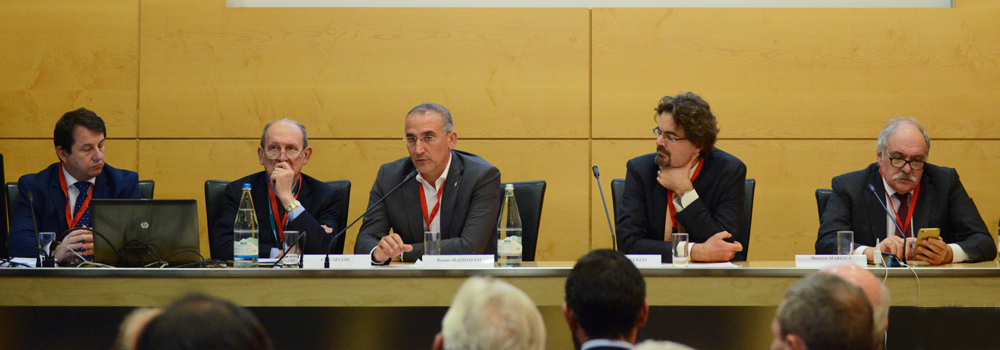FS Italiane and Hupac: more logistical infrastructure for the future increase of freight traffic from the Gotthard Pass

Rome, 11 November 2016
Upgrading the logistical infrastructure in the “Logistical Region of Milan” to effectively manage the future increase of volume in freight traffic which, thanks to the commercial opening of the new Gotthard base tunnel, will move from road to rail.
This was the greatest need which emerged from the study “The role of the terminal activities of the North West in the new Italy-Switzerland multimodal corridor: scenarios and prospects”, developed by the Centre on Regional Economics, Transport and Tourism (CERTeT) at the Luigi Bocconi University in Milan.
The research, which analysed the dynamics of Italian-Swiss transalpine intermodal rail traffic, was commissioned by Terminal Alptransit (TERALP), a partnership between the Italian State Railway Group and the Hupac Group.
The analysis report was handed to Graziano Delrio, Minister of Infrastructure and Transport, and to Doris Leuthard, Minister of Transport of the Swiss Confederation, during the Reno-Alps Corridor Conference – together for employment and growth, held in Rome on 9th November, one month before the commercial opening of the St Gotthard tunnel.
The study supports the Memorandum of Understanding signed in 2012 by FS Italiane, FS Logistica, CEMAT and HUPAC to create new terminals at Milano Smistamento and in Brescia and Piacenza.
Over €200 million worth of investment has been earmarked to upgrade and develop the three terminals, which will have infrastructure specifications that meet the parameters set for the Core European Corridors, especially in terms of freight traffic: 750 metre-long platform modules (for loading and unloading goods) and a 4 metre-high profile.
Once all the terminal infrastructure and technology upgrades have been completed, the system will be able to handle freight traffic of about 800,000 intermodal transport units (ITU) a year. Transferring these units from road to rail will undoubtedly have positive repercussions on the environment and communities. This all falls under the “railway care” sought by Minister Graziano Delrio, the goal of which is to transfer 30% of freight traffic from road to rail by 2030 and 50% by 2050.
Finally, the CERTeT report highlighted that a flanking policy for the development of terminal activities in the “Logistical Region of Milan” would not only have a significant impact on the environmental, economic and social sustainability of the European transport system, but it would also prevent a share of the economic value of transport services from being moved off-shore, in terms of the departure and arrival regions of this transport.